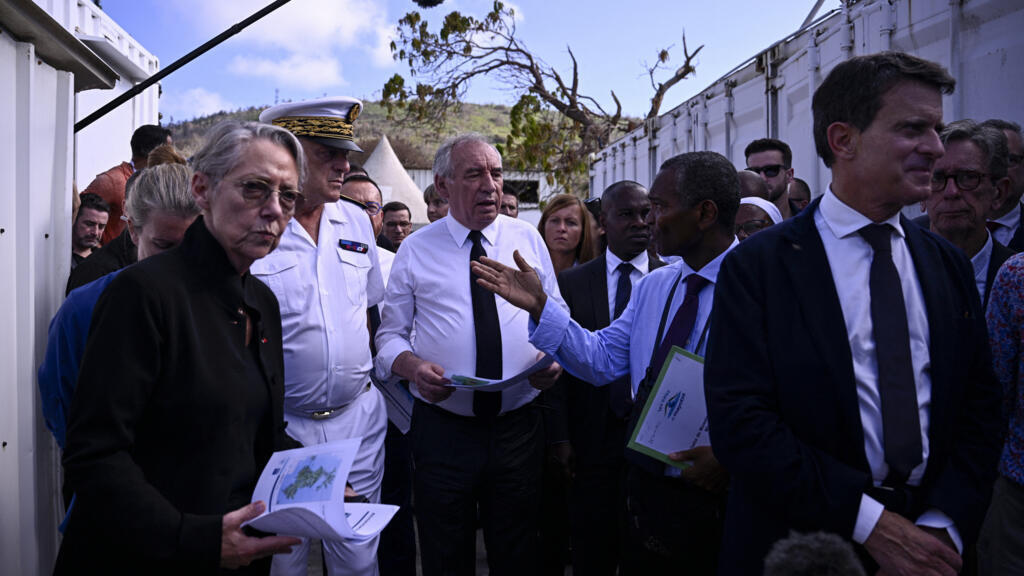Just days before the one-year anniversary of the ceasefire that ended the Israel-Hezbollah war in Lebanon on November 27, 2024, tensions threaten to rise once again.
This week, Israel carried out several airstrikes on southern Lebanon, killing at least a dozen people, according to Lebanese health officials.
Israel’s military said on Friday that it had targeted Hezbollah members and infrastructure, including weapons storage facilities as well as a Hamas training complex, all linked to Iran-backed groups.
A local resident, speaking to DW on condition of anonymity, denied the Israeli military’s claims that there were weapons or explosives in the area. The resident said, “This area is inhabited by civilians,” and “the playground was reduced to debris.” [were] Many victims.”
Another local confirmed that the place was a popular sports venue. “We are always there,” the resident said. “The claims that Hamas exists are completely false.”
Hezbollah’s military wing, which is designated as a terrorist organization by several countries including the US and Germany, has rejected Israel’s allegations.
“One year later, the ceasefire is essentially in shambles,” said Sami Halabi, policy director at a Beirut-based think tank. Alternative Policy InstituteTold DW.
“It has been put together because all parties to the conflict are using it for their own purposes,” he said, adding that, in his view, the coming year will be decisive. “Either Lebanon addresses the core issues, or the ceasefire breaks down and the country slides back into open conflict.”
What was the reason for the ceasefire?
On October 8, 2023, Hezbollah began targeting northern Israel in support of Hamas, which had launched a terrorist attack on Israel the day before, sparking a two-year conflict in Gaza.
During clashes between Israel and Hezbollah over the next 12 months, approximately 60,000 Israelis and approximately 100,000 Lebanese were forced to evacuate border areas. In Israel, most people have not yet returned due to ongoing security concerns, while in Lebanon, widespread destruction and constant air strikes have made return nearly impossible for many.
On the night of September 30, 2024, the conflict in Lebanon escalated into a two-month war, including a ground invasion by Israel. According to the Lebanese Ministry of Public Health, more than 4,200 people had died as of January 9, 2025, including many Lebanese civilians. The World Bank estimates the cost of reconstruction at approximately $11 billion (€9.5 billion).
During the war, Israel significantly weakened Hezbollah, killing many leaders and reducing most of the group’s military capabilities.
However, Hezbollah remains a leading member of Iran’s “axis of resistance” – a coalition of groups and states that call for the destruction of the US and Israel – and continues to advocate Israel’s extinction. Israel has accused Hezbollah of recapturing and rebuilding its weapons stockpile.
What did the armistice specify?
The peace deal brokered by France and the US on November 27, 2024, mirrors key provisions of UN Resolution 1701 from 2006.
It calls for Israel’s withdrawal from Lebanese territory, although Israeli troops remain deployed at five locations within Lebanon.
This week, Beirut filed an urgent complaint with the UN Security Council over the construction of a newly constructed wall. According to United Nations peacekeepers (UNIFIL), Wall Overlaps with the Blue Line, which demarcates the border between Israel and Lebanon, and restricts Lebanese access to more than 4,000 square meters (43,000 sq ft) of land.
In response, Israel denied that the wall, construction of which is scheduled to begin in 2022, encroaches on Lebanese territory.
The ceasefire also calls for the deployment of Hezbollah forces north of the Litani River, Lebanon’s largest river. Hezbollah claims to have withdrawn its military presence beyond that line.
Additionally, the ceasefire also specified that Hezbollah must disarm. However, Hezbollah officials have argued that this only applies to areas south of the Litani River, not across Lebanon. The militias reject disarmament as long as Israeli troops remain in Lebanon.
In August, Hezbollah also threatened to start a civil war if the Lebanese government insisted on its disarmament.
The peace plan also called for the Lebanese Army to deploy troops alongside multinational UNIFIL peacekeepers in southern Lebanon.
On Thursday, Lebanese Prime Minister Nawaf Salam announced that plans to demilitarize the south by the end of the month are “on track.”
“We need to recruit more people into the army, and we need to better equip the army, and we need to be able to raise the salaries of the army,” Salaam told news broadcaster Bloomberg.
However, political analyst Sami Halabi argues that the main problems remain unresolved. “The armistice agreement was also drafted in a similar manner [US] The Trump administration worked on its ‘peace deal’ amid multiple conflicts: a list of bullet points presented as a framework,” he said.
Halabi said, “While it might be nice to turn something around, the point is that after a year of ‘turning around’, the situation in Lebanon is no closer to a solution.”
In his view, a ceasefire can only lead to stability, or durable peace, if it is part of a broader process where the Lebanese state gradually assumes control of national defense and is equipped to maintain deterrence.
“This could be through stronger military capabilities, as in Egypt, or through broader political compromise,” he said, “one or both could work, but that is not the status quo.”
Can direct conversation bring about any change?
The ceasefire also ended Lebanon’s years-long political vacuum with the election of President Joseph Aoun in January 2025.
Earlier this month, Aoun said Lebanon had “no choice” but to engage in talks. “The language of negotiations is more important than the language of war,” he told reporters. He said, “We have seen [war] Did it with us.”
Prime Minister Salam echoed Aoun’s sentiment and expressed hope that Lebanon could garner US support for a diplomatic solution.
Until now, due to the lack of diplomatic relations, direct negotiations between Lebanon and Israel have been out of the question, except for a brief instance in 1983. In fact, both the countries are technically at war since 1948.
“Lebanon is under increasing pressure militarily from Israel and diplomatically from the US to accept agreements it previously considered objectionable,” said Lena Khatib, associate fellow at Chatham House, a London-based think tank. wrote In an opinion article earlier this month.
This possibility, he added, is a threat to Hezbollah, noting that it “paves the way for a future peace agreement with Israel, which would remove Hezbollah’s self-proclaimed objective.”
Edited by: Jay Wingard, Andreas Illmer






Leave a Reply